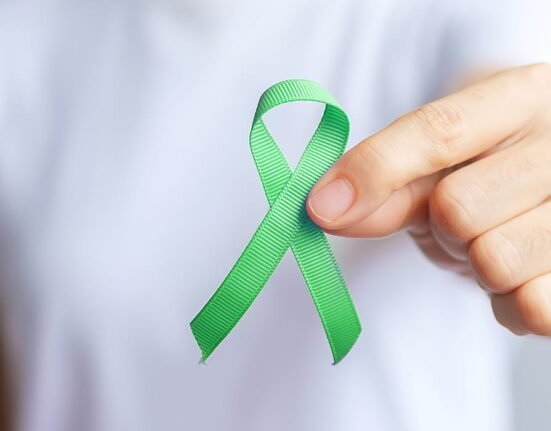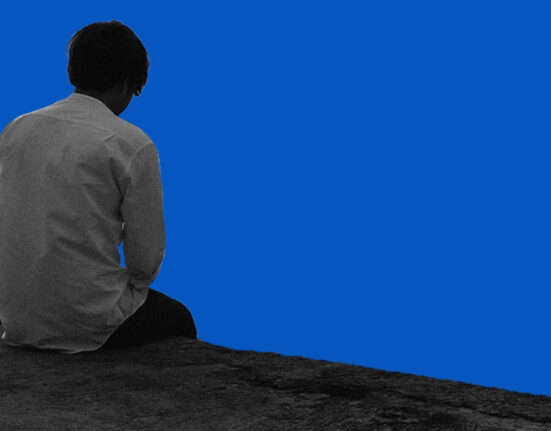When sharing, the distinction between a true connection and oversharing is not in how much you reveal, but in how you reveal it. We live at a time when our darkest troubles flow into comment sections, and our nocturnal musings become morning posts. However, when vulnerability turns into a flood, the very connection we desire begins to drown.
Read More: Oversharing and Its Impact on Mental Health
It Becomes a Flood
What our grandparents murmured over kitchen tables is now aired to hundreds of listeners. Speaking openly about mental health or relationship turmoil is undeniably brave. But as Shabahang and colleagues (2024) uncovered, for many young people, this vulnerability can blur into oversharing— fueled by anxiety, a hunger for validation, and the addictive pull of plaƞorms themselves. To say that when we are in emotional distress, we are more inclined to talk excessively, frequently, and in ways that don’t make us feel better.

Everyone has experienced the jittery high that comes from sharing something so personal and then nervously monitoring likes and comments. The hollow feeling when “support” is expressed as heart emojis by acquaintances. The guilt that comes with having someone else’s catastrophe tale invade your tranquil evening scroll. Researchers refer to social media platforms as feedback loops, which amplify these trends. Every like, remark, and share reinforces our disclosures, causing us to associate our agony with digital validation.
Read More: Digital Intimacy vs. Real Connection: Are We Emotionally Connected or Just Plugged In?
The Hidden Cost of Emotional Dumping
Neena starts each morning reading her friend Maya’s detailed updates about her divorce— court dates, arguments with her ex, fears about custody. After weeks of these daily downloads, Neena begins dreading opening her phone. She loves Maya but feels trapped as an unpaid therapist. Expressing suffering without consent or consideration for the recipient’s ability is known as emotional dumping. It is one-sided, overpowering, and frequently repetitious, which sets it apart from genuine sharing.
What Emotional Dumping Looks Like
- Long, detailed posts about ongoing crises without seeking specific support.
- Repeatedly sharing the same problems without taking the suggested actions.
- Treating social media like a personal therapy journal
- Ignoring others’ attempts to change the subject or set boundaries
The research confirms what many feel intuitively. As Shabahang et al. (2024) found, excessive sharing can lead to “privacy breaches, cyberbullying, and mental health issues.” But there’s a subtler harm: it erodes the genuine connection we’re desperately seeking. Studies on environmental psychology reveal similar patterns between open-plan offices and oversharing on social media—both reduce a person’s control over their personal information, with the ability to regulate what others know being “a strong moderator of stress” (Psychology Today, 2022).
Regular exposure to emotional dumping creates compassion fatigue in our networks. Friends begin to pull back, not from lack of caring, but from emotional exhaustion. The connection we’re trying to create becomes harder to achieve.
What We Forget We’ve Shared
Here’s something surprising: people often don’t remember what they’ve posted on social media. Penn State researchers studying digital disclosure patterns call this the “memory gap“—we scatter intimate details across the internet, then forget we ever shared them. Think about it. Can you recall everything you posted last month? Those vulnerable moments you shared might be preserved online long after they’ve faded from your memory, potentially affecting relationships and reputation in ways you never intended.
The Art of Authentic Connection
Real sharing isn’t measured by word count or emotional intensity. It’s about creating space that honours both people in the exchange.
1. Healthy Sharing Looks Like
- Checking in before unloading: “Do you have space to listen?”
- Being specific about what you need: comfort, advice, or just being heard.
- Reciprocating—asking about their life too
- Respecting “not right now” as a complete answer
2. Everyday examples
- Instead of: “Ugh, another terrible day at work. Everything is falling apart, I can’t handle anything anymore.”
- Try: “Rough day at the office. Anyone else dealing with deadline stress? Could use some perspective.”
The second approach invites connection rather than demanding it. It acknowledges struggle without overwhelming others.
Building Digital Emotional Intelligence
Navigating emotions online requires skills our parents never needed. Research on digital emotional intelligence shows it encompasses “the ability to perceive, understand, express, and regulate emotions” in digital contexts (Adolescent Research Review, 2024). This means recognising our own emotional patterns online, understanding how our posts affect others, and communicating thoughtfully across screens.
Read More: How To Regulate Our Emotions?
1. Before posting emotional content, try this
- The 24-Hour Rule: Write it in your notes app first. Sleep on it. Once, the urgent need to share fades with time.
- Name Your Need: Get specific. “I need encouragement” hits differently than vague crisis broadcasting.
- Consider Your Audience: Your college friends might handle your dating disasters better than your professional network.
- Choose Your Platform Wisely: LinkedIn isn’t Instagram. Family group chats aren’t Twitter.
2. Defending Your Personal Well-being
- It’s okay to mute chronic oversharers
- You can love someone and limit their access to your emotional bandwidth.
- Suggesting professional help isn’t cruel—it’s caring
- Your peace matters too
The Geography of Oversharing

Studies reveal interesting patterns: certain regions and cultures are more prone to sharing controversial opinions, family drama, and personal grievances online (Contemporary Communication Research, 2022). And here’s the really interesting part: sometimes, people get away with it. There’s no immediate backlash, no unfriending spree. That tells us something important—our relationship with being open is way more complicated than a simple right or wrong. But don’t mistake a lack of instant consequences for a lack of cost. The real bill for this stuff often comes later.
The stuff that felt fine in the moment? It can quietly chip away at the foundation of a relationship. The trust and closeness you thought were solid can slowly, almost imperceptibly, wear thin over time. What seemed impact-free at the time can end up leaving a mark.
Read More: Why Some People Struggle More in Relationships
Knowing When to Get Professional Assistance
Neither our friends nor social media are therapists. If you discover:
- Posting about the same problems repeatedly without feeling relief
- Getting angry when people don’t respond to your posts
- Using social media as your primary emotional outlet
- Feeling worse after sharing online
It might be time to consider professional mental health support. Getting the correct help for what you’re going through is not a sign of weakness. Please remember that even while your friends want to support you, many of them are not equipped to handle ongoing mental health problems. Your relationships and general well-being are safeguarded by professional assistance.
Read More: Why Asking for Help Is a Strength, Not a Weakness
Moving Ahead With Awareness
It’s not about reducing sharing or withdrawing into solitude. It’s about sharing with more expertise. When we approach vulnerability with intention rather than impulse, something beautiful happens in our connections.
Evidence-based tactics for more healthful digital sharing (Adolescent Research Review, 2024; Shabahang et al., 2024):
- Implement waiting periods before posting emotional content
- Balance sharing with genuine listening to others
- Develop a stronger awareness of when professional support is needed
- Practice digital emotional intelligence daily
The internet didn’t make us require anything else. It merely provided a voice to the oldest and most common human suffering: the desire for love despite being truly understood. Everyone wants to feel safe in the spotlight, to be recognised for the whole complex, chaotic, and amazing version of themselves. That is the secret. Furthermore, broadcasting our suffering into space does not do anything. It takes place when we sit across from a friend at the kitchen table. Not at them, but when we speak with them. We eventually discover the genuine connection we’ve been searching for all along in this way. Okay. Before you hit post on that raw, emotional update… just pause for a second. Breathe.
1. Ask yourself these three real questions—not as a checklist, but as a gut-check:
- What am I actually looking for here? A virtual hug? Real advice? Or just to feel a little less alone? Get specific with yourself. Naming the need is half the battle.
- Is this the right place, the right person? Your Instagram followers aren’t your therapist. Your group chat might not be ready for that level of heaviness. Selecting your audience is similar to deciding who gets to enter your living room at two in the morning.
- Is it possible to state this without merely punging a burden on people, but in a way that invites them in? Instead of stating a demand, state an invitation. A desire for connection and a scream for assistance are quite different.
Everything is altered by this small change, from simply reacting to halting and making a decision. It’s the difference between telling someone, “Hey, the water’s rough right now,” and drowning them with your story. Would you mind spending a moment with me on the shore? In a world that’s all shouting and noise and hot takes, choosing to speak gently, to listen deeply, to connect on purpose… that isn’t just nice. It’s quietly revolutionary. It’s how we build real community— not through algorithms, but through attention. Through care. Because at the end of the day, the most powerful thing we can ever do for each other isn’t to post louder. It’s to listen like we mean it.
References +
Psychology Today. (2022). Why We Overshare on Social Media. Psychology Today. https://www.psychologytoday.com/us/blog/your-online-secrets/202202/why-we-overshare-on social-media
Shabahang, R., Shabahang, M. J., Shabahang, R., & Shabahang, S. (2024). Anxiety, attention seeking, and social media addiction predict the breadth and depth of sharing among youth. Psychological Reports. https://doi.org/10.1177/00332941241231402
Adolescent Research Review. (2024). Adolescent social media use and emotional intelligence: A systematic review. Adolescent Research Review, 9, 1–22. https://doi.org/10.1007/s40894-024- 00121/8













Leave feedback about this